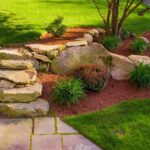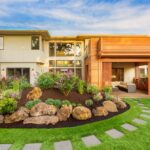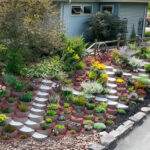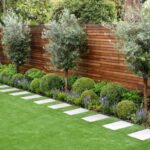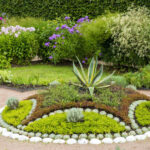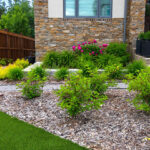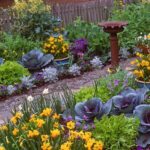Landscaping a garden is a fun and rewarding way to transform your outdoor space into a beautiful and functional area. Whether you have a small plot of land or a large backyard, there are endless possibilities for creating a visually appealing and sustainable garden. When planning your landscaping project, it’s important to consider factors such as the layout of your space, the types of plants and trees you want to incorporate, and the overall aesthetic you want to achieve.
One of the first steps in landscaping your garden is to assess the layout of your space. Take note of any existing structures, trees, or plants that you want to keep, as well as any areas that may need to be cleared or leveled. Consider the natural flow of the land and how you can create paths, seating areas, and borders that will enhance the overall look and feel of your garden.
Next, think about the types of plants and trees you want to incorporate into your garden. Consider factors such as the amount of sunlight and water each plant needs, as well as how much maintenance each plant requires. Choose a variety of plants in different sizes, shapes, and colors to create a dynamic and visually appealing landscape. Consider planting a mix of annuals, perennials, shrubs, and trees to provide year-round interest and beauty.
In addition to plants and trees, consider adding hardscaping elements to your garden such as paths, patios, and walls. These structures can help define different areas of your garden and create a sense of organization and order. Use materials such as stone, brick, or wood to complement the natural elements of your garden and create a cohesive look.
When it comes to designing your garden, think about the overall aesthetic you want to achieve. Do you want a formal garden with structured beds and pathways, or a more relaxed and naturalistic design with flowing borders and wildflower meadows? Consider your personal style and taste, as well as the style of your home and surrounding landscape, when choosing plants, materials, and layout for your garden.
Finally, don’t forget to consider the practical aspects of landscaping your garden, such as irrigation, drainage, and maintenance. Make sure you have a plan in place for watering your plants, especially during hot and dry periods, and consider installing a rainwater harvesting system to reduce your water usage. Also, think about how you will maintain your garden over time, including pruning, weeding, and fertilizing, and make sure you have the time and resources to keep your garden looking its best. By carefully planning and designing your garden, you can create a beautiful and sustainable outdoor space that you can enjoy for years to come.



